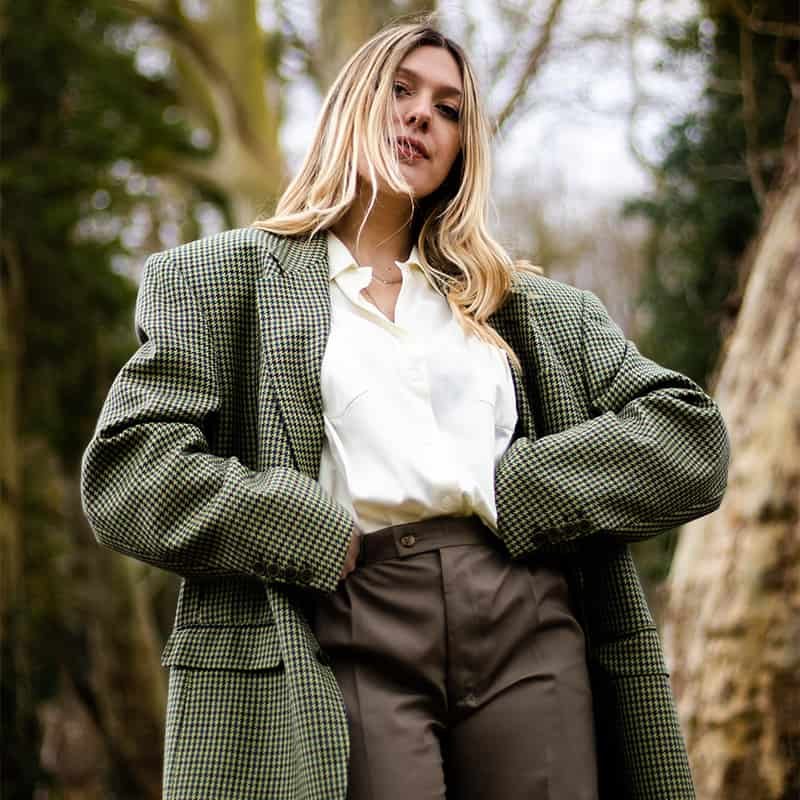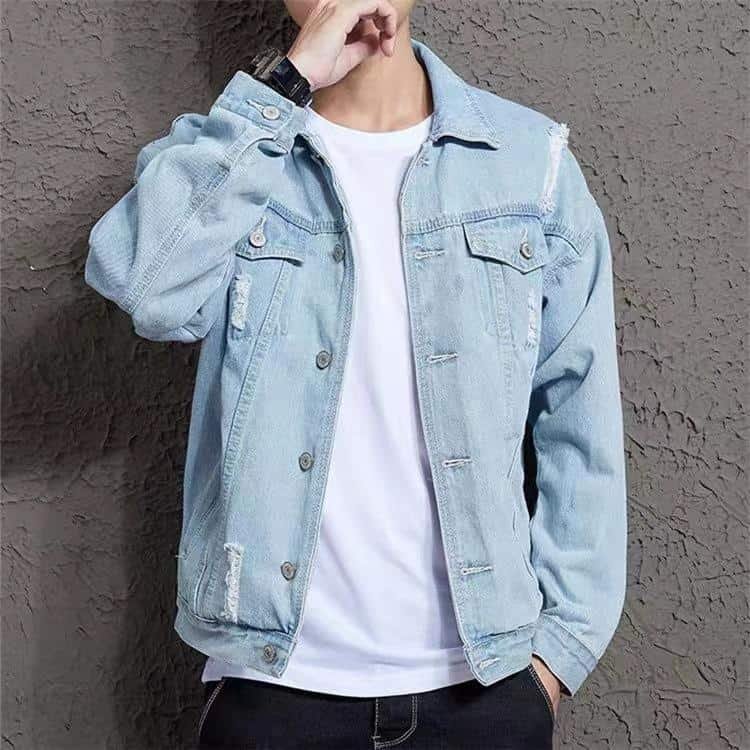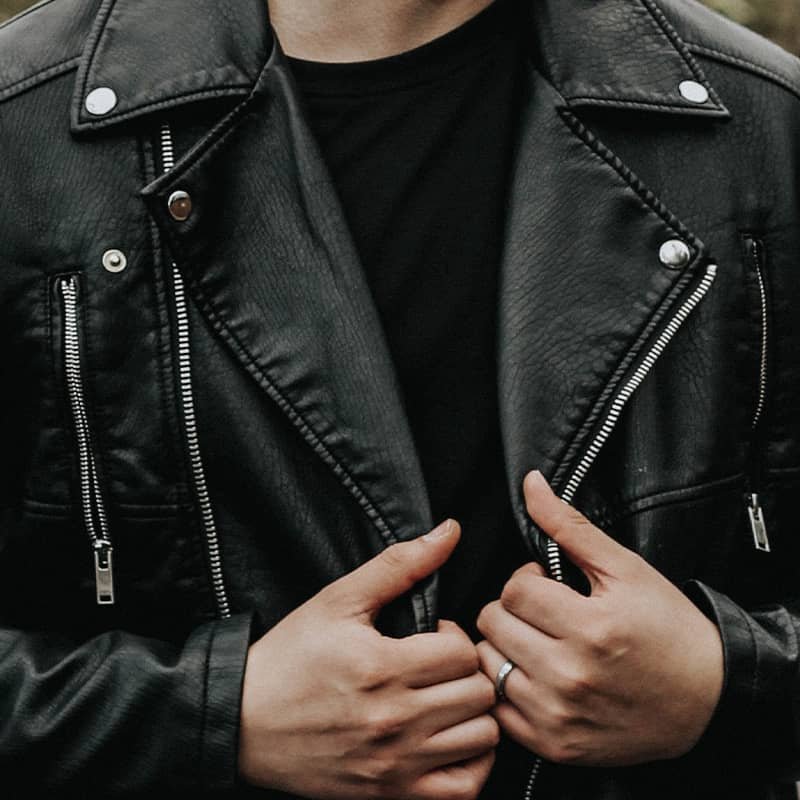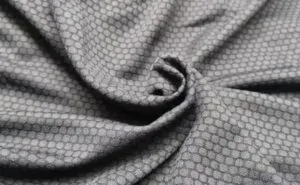What is a jacket?

A jacket is a type of outerwear garment that is worn over other clothing to keep the body warm and protect against the weather. Jackets can be made from a wide range of materials, including wool, cotton, synthetic fibers, and leather. They come in a variety of styles, including casual, formal, and sport-specific, and can be worn for both practical and fashion purposes. Jackets can be worn over a variety of garments, such as shirts, dresses, or sweaters, and are typically worn in cooler weather to provide warmth and protection against the elements.
Which material is the best for a winter jacket?

The best material for a winter jacket will depend on a variety of factors such as the climate in which you live, your personal style, and the activities you will be participating in. Here are a few popular options to consider:
Wool
Wool is a natural fiber that is known for its warmth and breathability. Wool jackets can be made from a variety of types of wool, such as merino wool or wool blends, and are a good choice for cold and wet weather. Wool jackets are also relatively durable and resistant to wrinkling, making them a good choice for travel.
Down
Down is a natural insulating material made from the feathers of geese or ducks. Down jackets are known for their warmth-to-weight ratio, and they can be a good choice for very cold temperatures. However, down can become wet and lose its insulating properties if it gets wet, so it may not be the best choice for wet or humid conditions.
Synthetic insulation
Synthetic insulation materials, such as polyester or nylon, are a good choice for wet or cold conditions because they retain their insulating properties when wet. Synthetic insulation materials are also often more affordable than natural materials like down.
Fleece
Fleece is a synthetic material that is known for its softness and warmth. Fleece jackets are a good choice for milder winters or as a layering piece in very cold weather.
Waterproof materials
If you live in an area with a lot of rain or snow, a waterproof material like Gore-Tex or a waterproof coated fabric may be a good choice for your winter jacket. These materials are designed to keep you dry in wet conditions, but they may not be as warm as other materials.
Ultimately, the best material for a winter jacket will depend on your specific needs and preferences. It’s a good idea to consider factors such as the climate in your area, the level of insulation you need, and the activities you will be participating in when choosing a jacket material.
jacket type
There are many different types of jackets available, each with their own unique features and benefits. Here are some examples:
Blazer

A blazer is a type of jacket that is typically made from wool or another smooth, durable fabric and has a more formal, professional appearance. It is typically worn as part of a business or formal attire, and can be paired with dress pants or a skirt.
Bomber jacket

A bomber jacket is a type of casual, waist-length jacket that is characterized by its ribbed cuffs, hem, and collar. It is typically made from a durable, water-resistant material such as nylon or leather, and has a zipper front closure.
Denim jacket

A denim jacket is a type of casual jacket made from denim, a sturdy cotton twill fabric. It is typically waist-length and has a button-front closure. Denim jackets are a popular choice for casual wear and can be paired with a variety of outfits.
Leather jacket

A leather jacket is a type of jacket made from leather, a durable and water-resistant material. It is available in a variety of styles, including bomber, moto, and biker, and can be worn for both fashion and practical purposes.
Parka

A parka is a type of long, insulated jacket that is typically worn in cold weather. It is characterized by its hood, which is often lined with fur or another insulating material, and its long length, which provides extra coverage and warmth.
Windbreaker

A windbreaker is a type of lightweight, water-resistant jacket that is designed to protect against wind and rain. It is typically made from a synthetic material such as nylon or polyester and has a zipper front closure. Windbreakers are often worn for outdoor activities or as a casual, everyday jacket.
These are just a few examples of the many different types of jackets available. Other options include anoraks, duffle coats, puffer jackets, and rain jackets, to name a few. No matter what type of jacket you choose, it is important to consider the weather and your activities, as well as fit, style, and quality when making your selection.
How do I choose the right jacket?

There are a few key factors to consider when choosing a jacket:
Climate and weather conditions
The first thing to consider is the climate and weather conditions in which you will be wearing the jacket. If you live in a very cold or wet area, you may need a jacket that is heavily insulated or waterproof. On the other hand, if you live in a milder climate, you may be able to get away with a lighter jacket.
Insulation
Different types of jackets are insulated with different materials, and the level of insulation you need will depend on the climate and your personal preference. Synthetic materials, such as polyester or nylon, are often used in puffer jackets and are a good choice for wet or cold conditions. Down, a natural insulating material made from goose or duck feathers, is also a popular choice and is known for its warmth-to-weight ratio.
Style and fit
The style of the jacket should be appropriate for the occasion and should fit you well. A jacket that is too small or too large will be uncomfortable and may not provide the necessary protection from the elements. Consider the type of clothes you typically wear and choose a jacket that will complement your wardrobe.
Features
Consider the features that are important to you when choosing a jacket. Do you need a hood for added protection from the rain or snow? Do you want pit zips for ventilation? Do you need multiple pockets for storage?
Price
Finally, consider your budget when choosing a jacket. Higher-priced jackets may offer more advanced features or higher-quality materials, but you can often find good-quality jackets at a lower price point if you shop around.
Ultimately, the right jacket for you will depend on your personal style, the climate and weather in your area, and your budget. It’s a good idea to try on several different jackets to find the one that feels the most comfortable and provides the level of protection you need.







